I like to draw on paper which has already been prepared particularly
for life drawing. I also use it for many simple line drawings. The reason behind doing this, is that I like to put some energy and movement into the paper
first. This seems to aid me when I am then actually drawing using
charcoal or pastels on top.
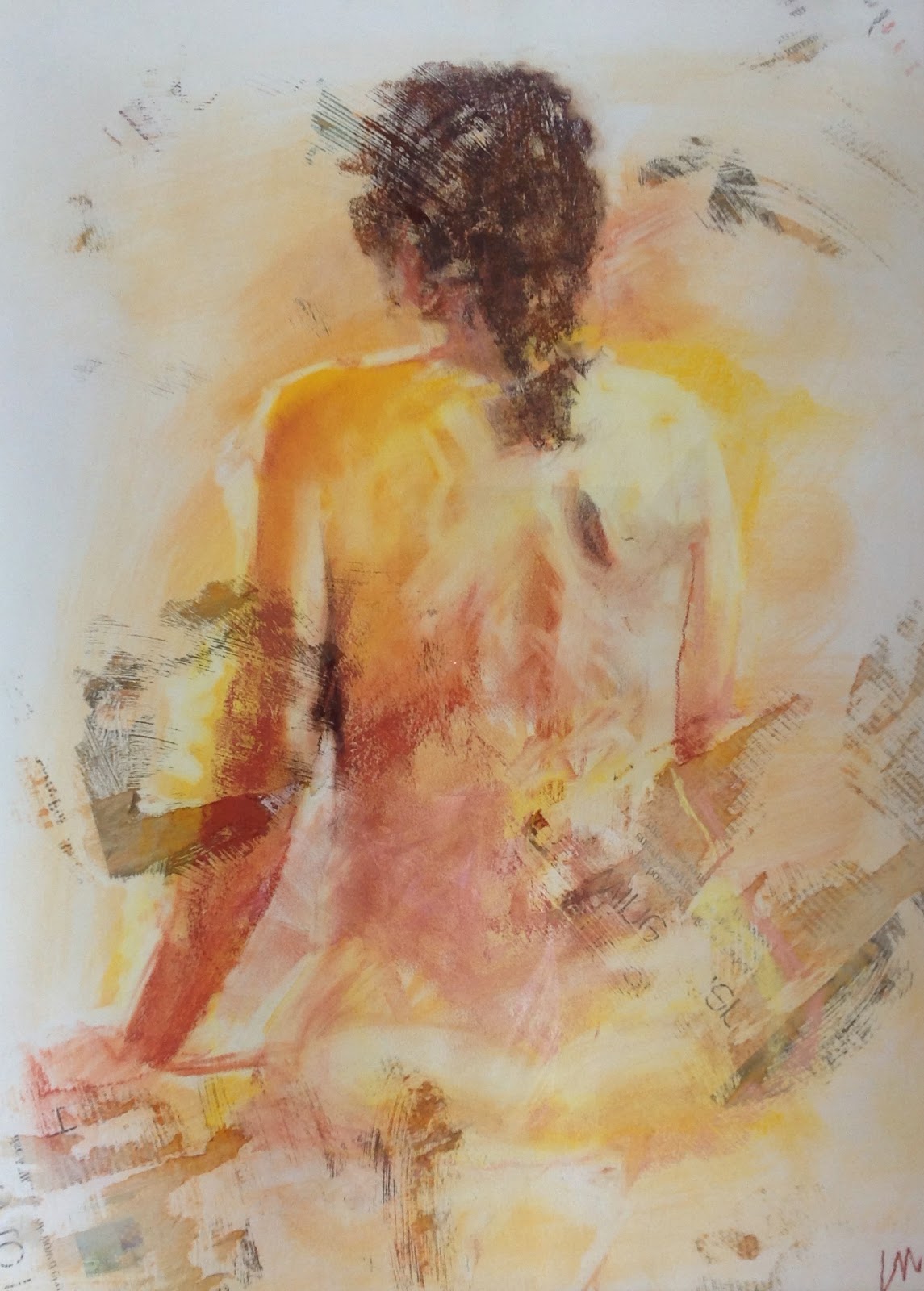 |
| Pastel on prepared paper |
To start I use gesso or
match pots of old emulsion paint. You can use watered down acrylic
paint. It is not an exact science! I use a large brush and often a
1" normal emulsion brush. You could also use a scraper for a flatter
feel. For me it is important to put the paint on in rounded strokes.
I
like to use newspaper ink and text using a reverse print method. I
place the newspaper in wet paint and then remove it after a short time
period. I find my best results are when only a small part of the ink is
in the paint. Sometimes there can be more newspaper left behind. Another
important point is not to leave any lines or edges - I tend to rip the
paper edges first. Also I tend to put the paper on a diagonal or upside
down so that the newspaper is not too obvious.
I have included some photos of the different steps with comments:-
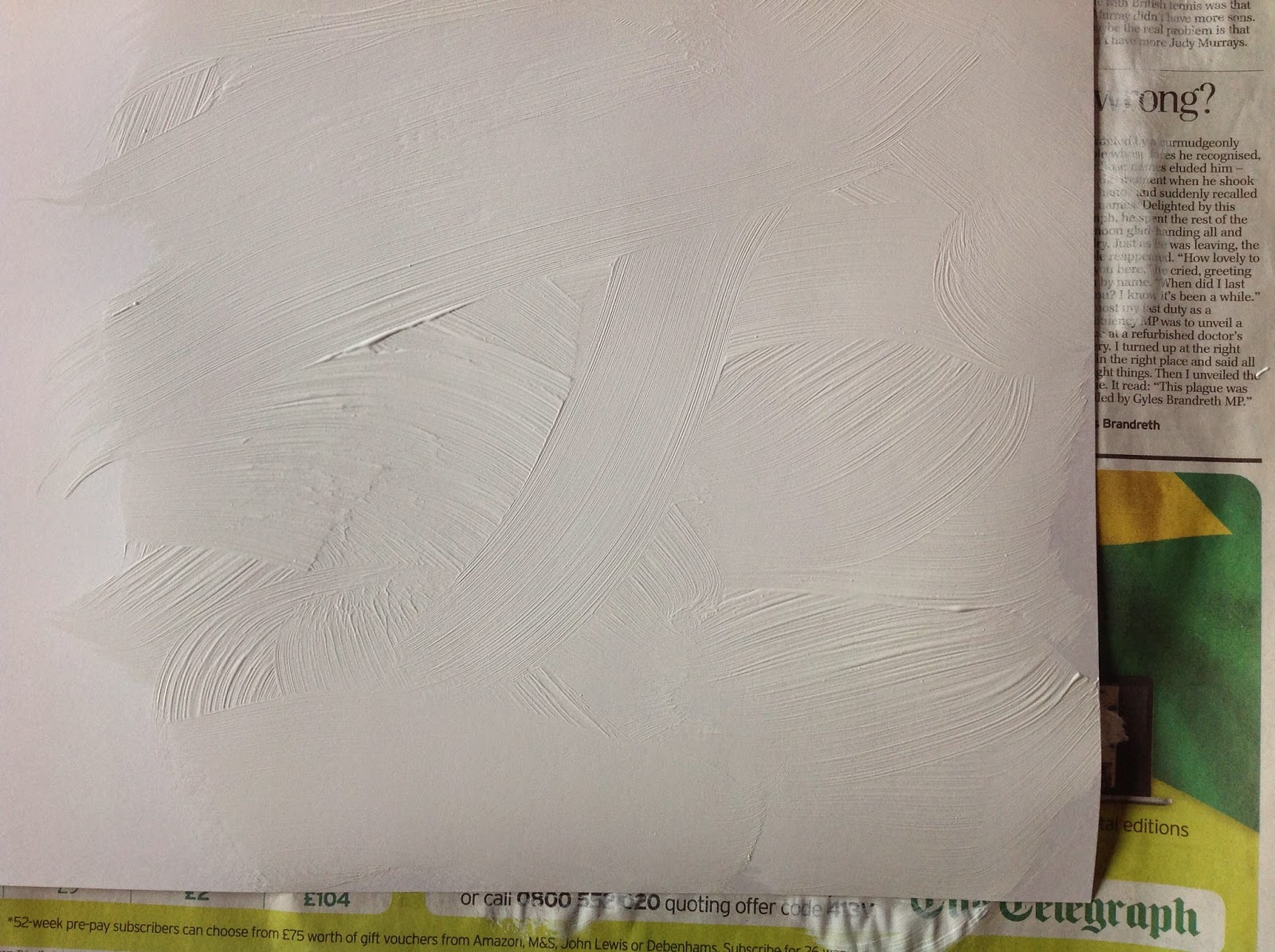 |
| Apply paint with a big brush. Put movement in. |
I like to play music while I work, it is quite therapeutic especially as there is no pressure on the result!
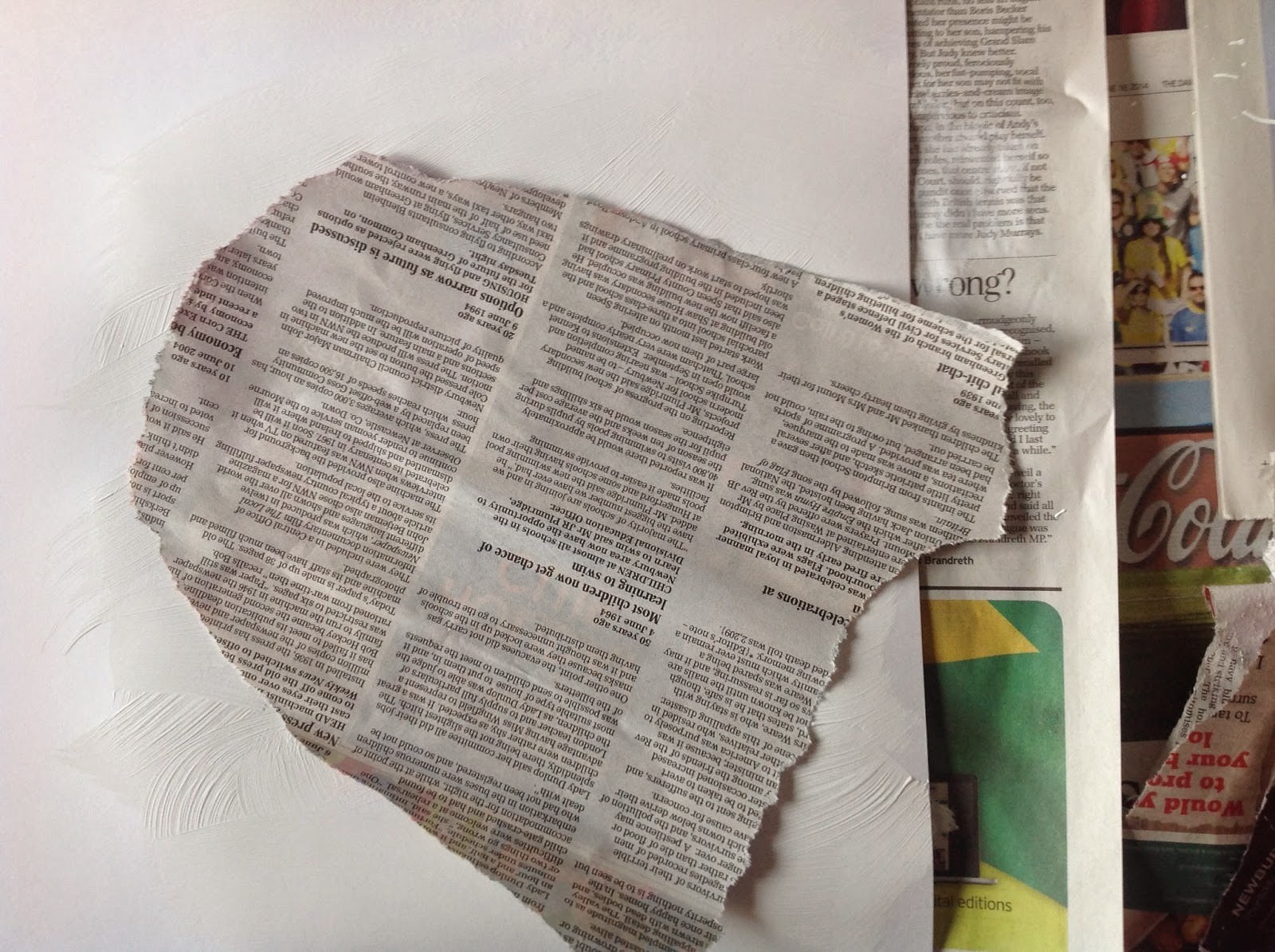 |
| Put a piece of ripped paper on the page. |
How long to leave the paper requires some
experimentation. Typically 30 seconds to a minute but could be longer
depending on paint consistency.
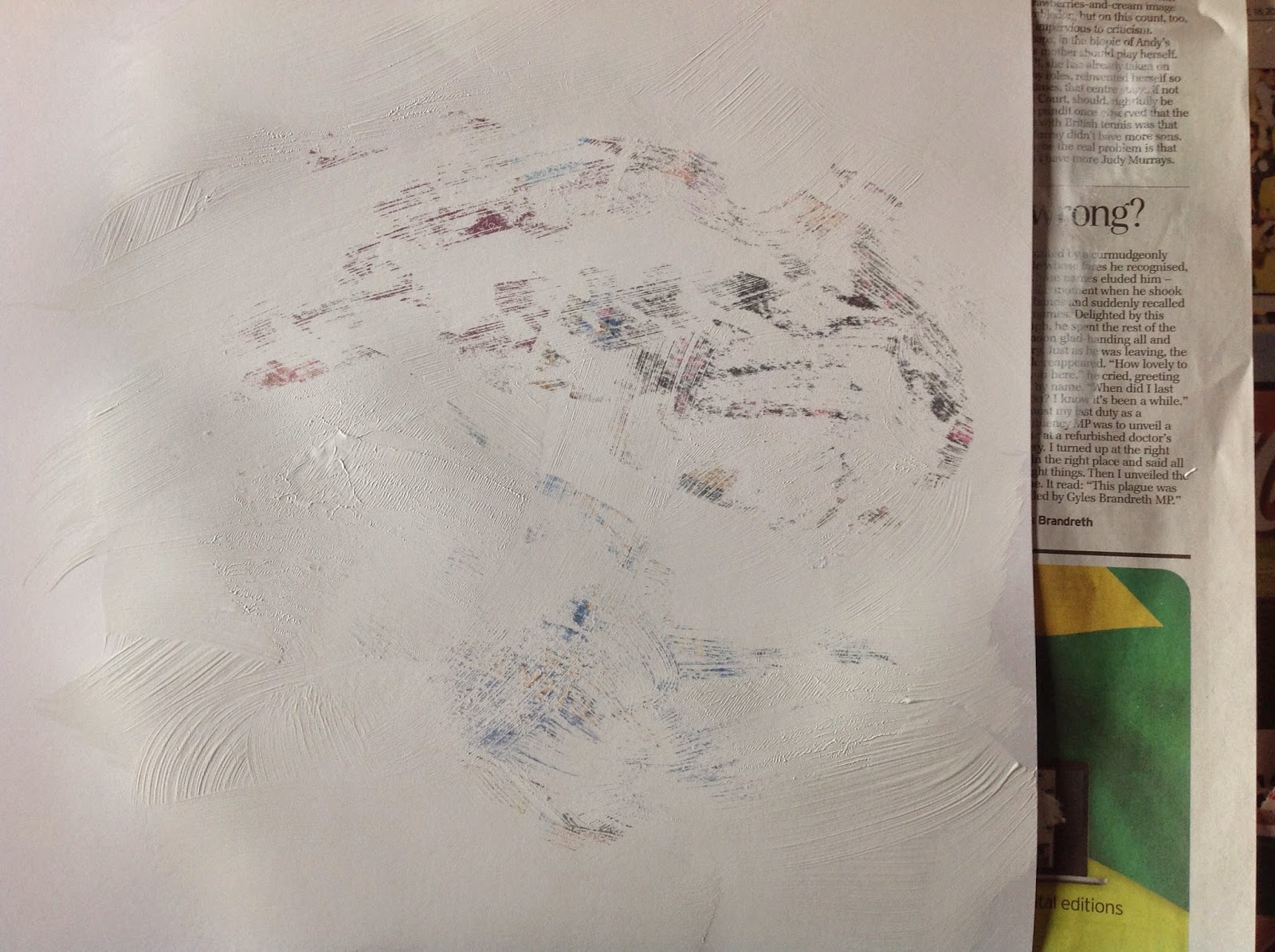 |
| Pull off the paper before too much has stuck on. |
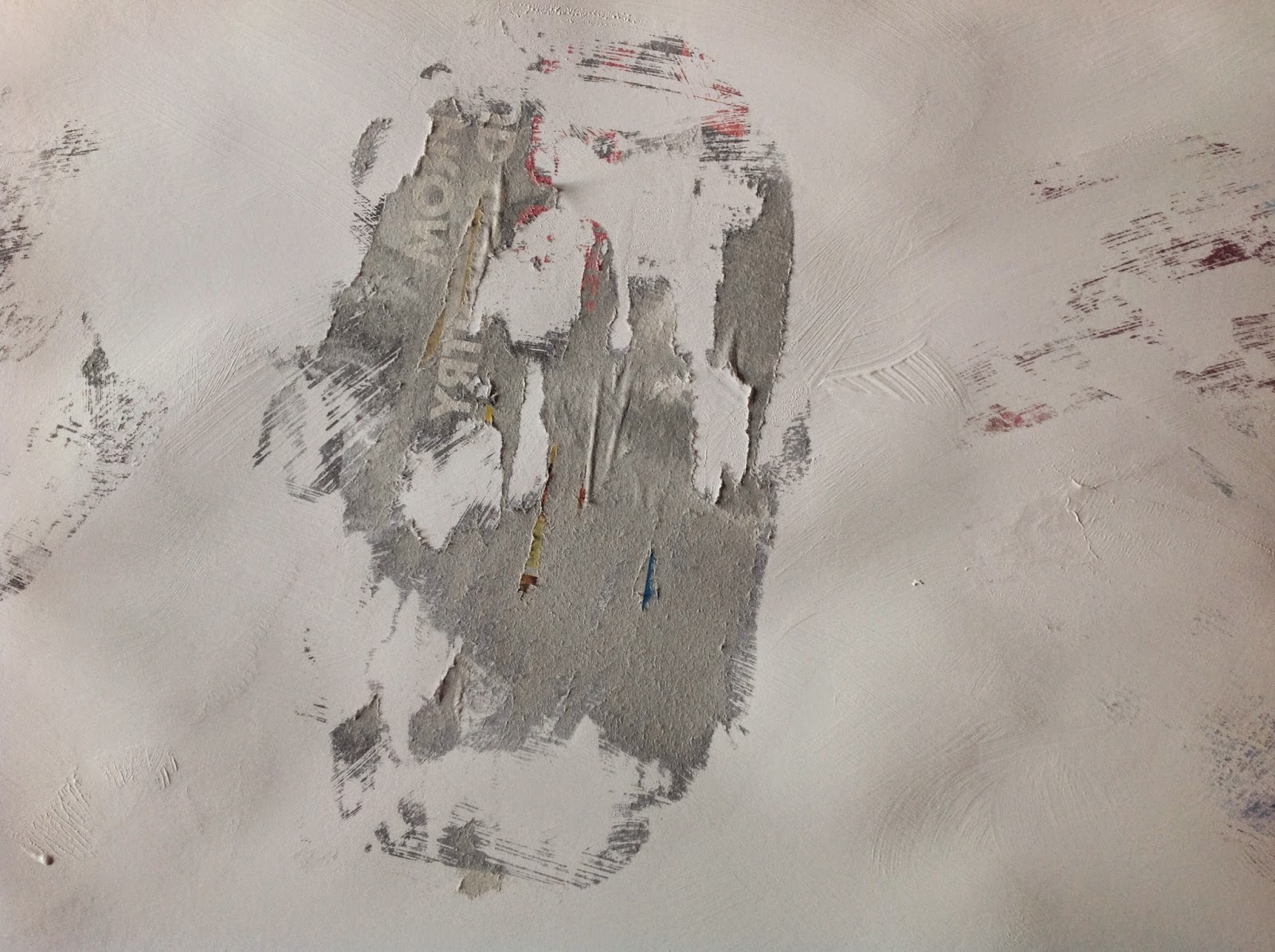 |
| Here there is a bit too much paper left |
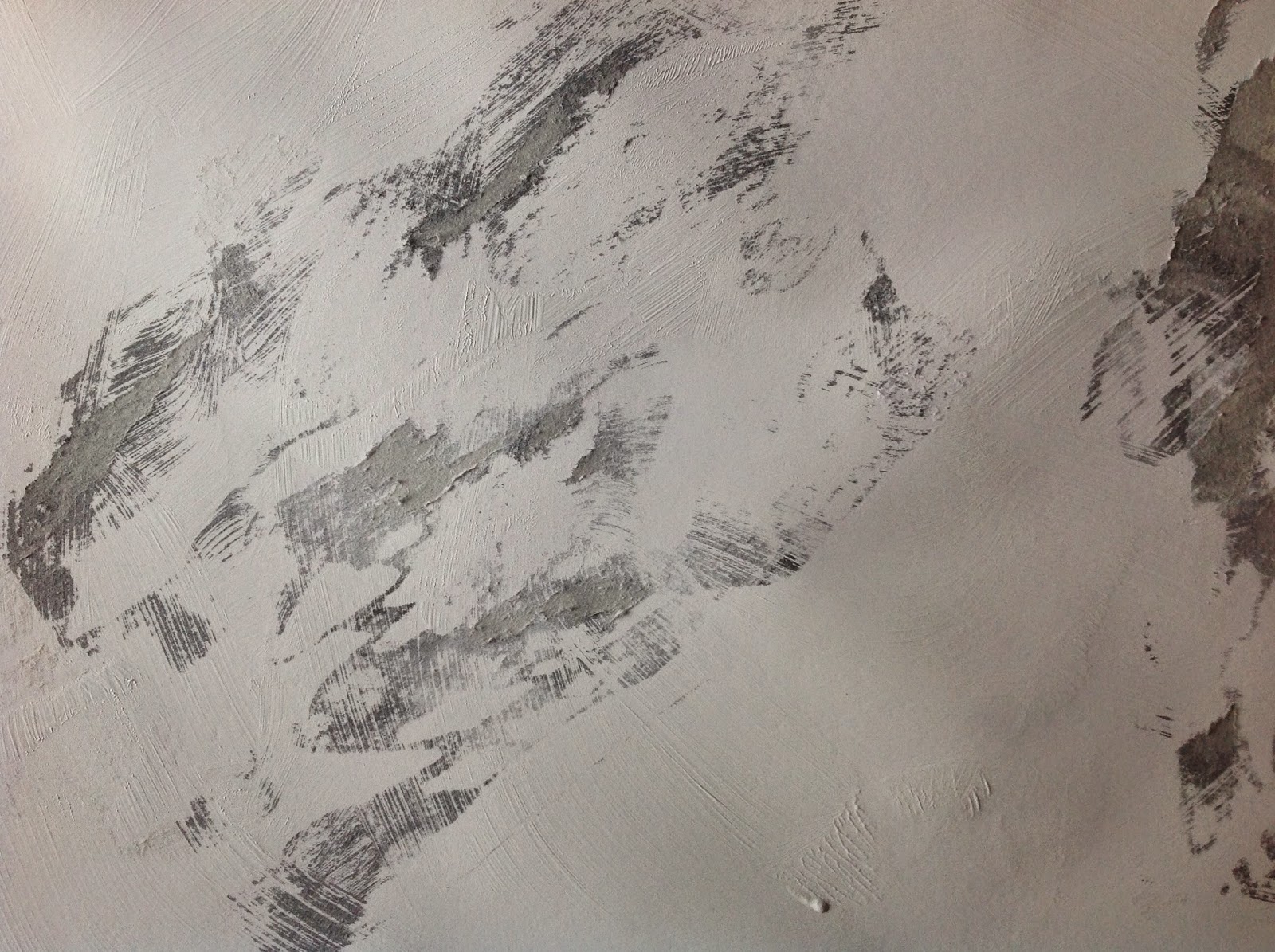 |
| Another example, you can see the ink in the brush marks. | |
|
|
|
|
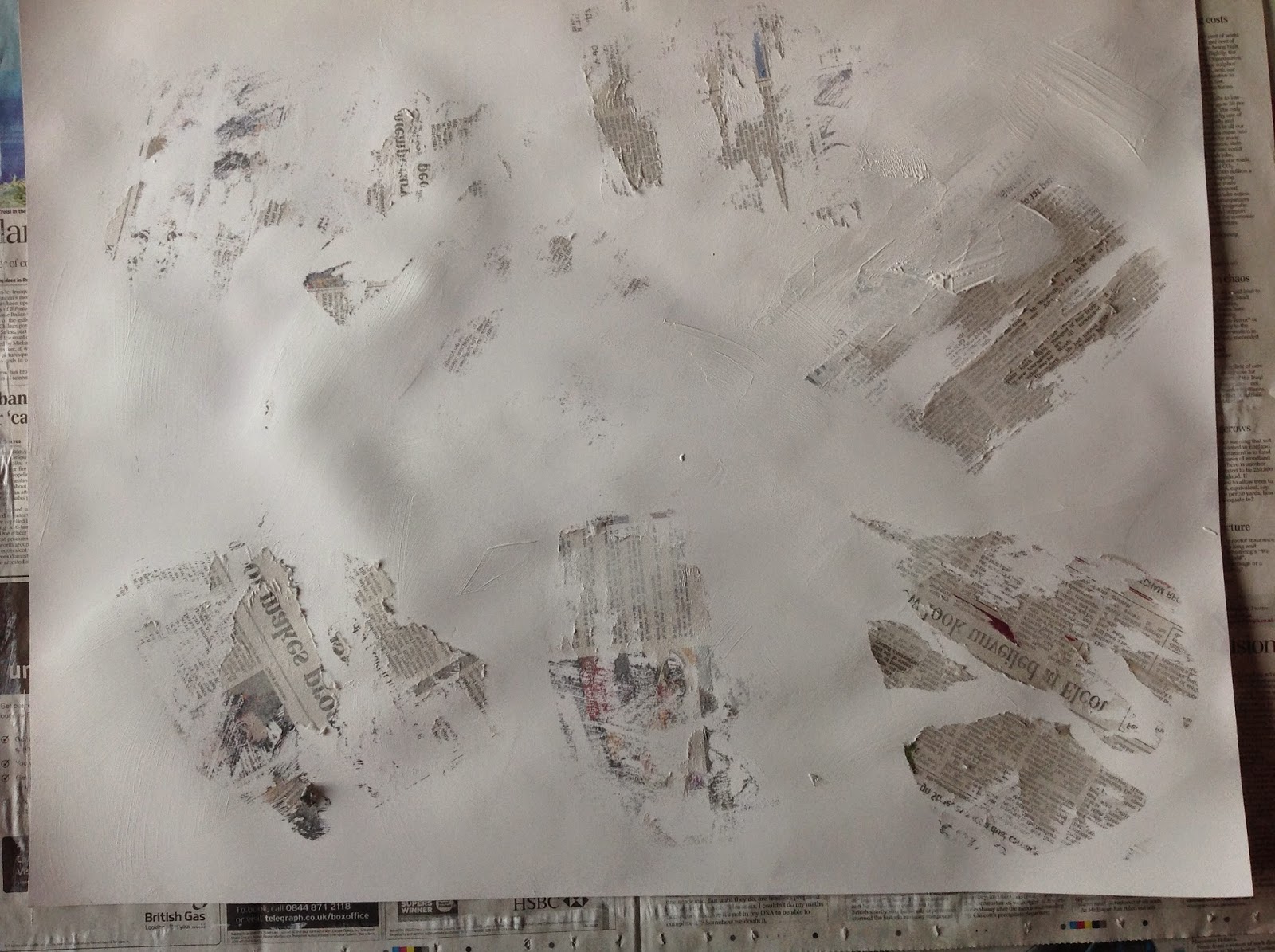 |
| A piece of paper ready for work. |
You may find you need to flatten the paper afterwards. I use 200g drawing paper, the thicker the better.
Have a go and experiment. If you need further information drop me an email.
Here's the pastel drawing I finished off at life drawing class.
 |
| Golden backed nude |
To keep it simple, you can just do the painting (stage 1) without newspaper as it can provide a wonderful feel for a charcoal life drawing on top. See example below.









